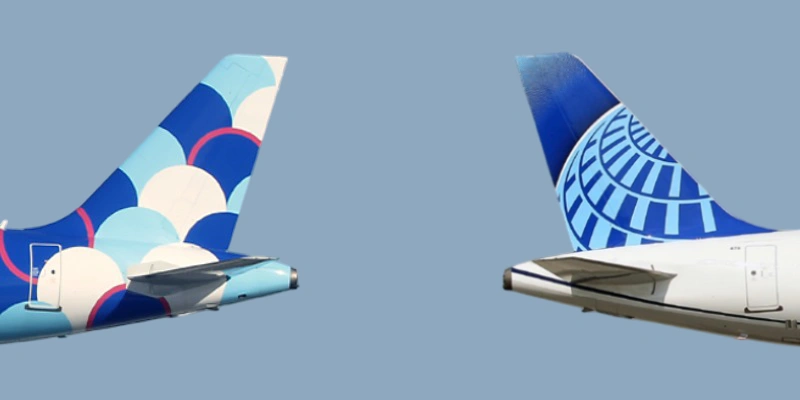United Airlines and JetBlue Airways asked the U.S. Department of Transportation (DOT) on Thursday to dismiss a complaint filed by Spirit Airlines against their proposed partnership.
Both airlines argued that the allegations of reduced competition were “fiction” and added: “Blue Sky will maintain JetBlue’s independence and enhance its competitiveness, ensuring JetBlue can continue to grow and compete as an independent airline.”
The Origin of the Alliance: A Response to Market Challenges
The “Blue Sky” alliance, announced on May 29, 2025, was designed to allow United and JetBlue to collaborate without sacrificing their rivalry. In an industry where airlines seek to optimize resources and improve passenger experience, this partnership is positioned as a strategy to sustain competition without excessive market consolidation.
Unlike other alliances blocked due to antitrust concerns—such as those attempted by JetBlue with American Airlines and Spirit Airlines—the “Blue Sky” alliance includes features intended to avoid such issues. Both airlines will continue operating independently, without revenue sharing or coordination of flight routes or schedules. According to a joint statement, the collaboration is specifically designed to preserve competition between the two carriers.
Why Is the Alliance Criticized? Spirit Airlines’ Perspective
The primary opponent of the alliance has been Spirit Airlines, which argues that the agreement between United and JetBlue will harm consumers by potentially reducing the availability of low-cost flights. The budget carrier has claimed that the deal poses the same market concentration risks as the failed “Northeast Alliance” between JetBlue and American Airlines.
→ JetBlue’s Second-Largest Investor Pressures Airline: Could Sell Stake If There Are No improvements
Spirit also warned that if the “Blue Sky” alliance proceeds, it could create anticompetitive incentives, favoring larger airlines and making it harder for smaller competitors to access key airports like New York’s JFK and Boston. Larger carriers, such as Delta and American, might view this collaboration as an opportunity to form similar alliances, further increasing industry consolidation.
Benefits for Passengers and the Industry
Despite objections, the alliance could bring significant benefits for passengers. First, United Airlines will gain access to coveted flight slots at New York’s John F. Kennedy International Airport (JFK), which has historically been challenging for smaller airlines due to terminal congestion. This addition will allow United to operate up to seven daily flights starting in 2027, potentially easing congestion at its Newark hub, which currently faces air traffic control-related issues.
Meanwhile, JetBlue will secure access to United’s preferred flight schedules at Newark Airport, particularly during peak hours. This improvement would strengthen its presence in one of the world’s most competitive markets.
Additionally, travelers will benefit from greater flexibility, as they can use loyalty points and make bookings across both airlines, expanding travel options for frequent flyers of either carrier.
What Does This Mean for the Future of Aviation?
The United-JetBlue agreement marks the beginning of a new era of strategic partnerships in U.S. aviation. Despite Spirit Airlines’ objections, the “Blue Sky” model could set the standard for future alliances in an industry increasingly facing regulatory and economic challenges.
If approved, the deal could set a precedent for future collaborations. While the United-JetBlue partnership aims to preserve competition, the real question is whether other competitors will follow suit—especially in a market as competitive as the U.S.
The alliance could also significantly impact ticket prices, flight availability, and service quality. Although the airlines will maintain operational independence, schedule coordination and route optimization could improve efficiency and reduce operational costs. In turn, this might benefit passengers with better pricing and more flight options.
Related Topics
For Tenth Consecutive Year: LATAM Named “South America’s Leading Airline 2025” at World Travel Awards
JetSMART Announces 66% Increase in International Flights from Lima (Peru) in 2026
Copa Airlines Launches Flights to Tucumán, Strengthening Its Presence in Argentina
Aerolíneas Argentinas Boosts Presence in Uruguay with New Routes from Brazil

Plataforma Informativa de Aviación Comercial con 13 años de trayectoria.




